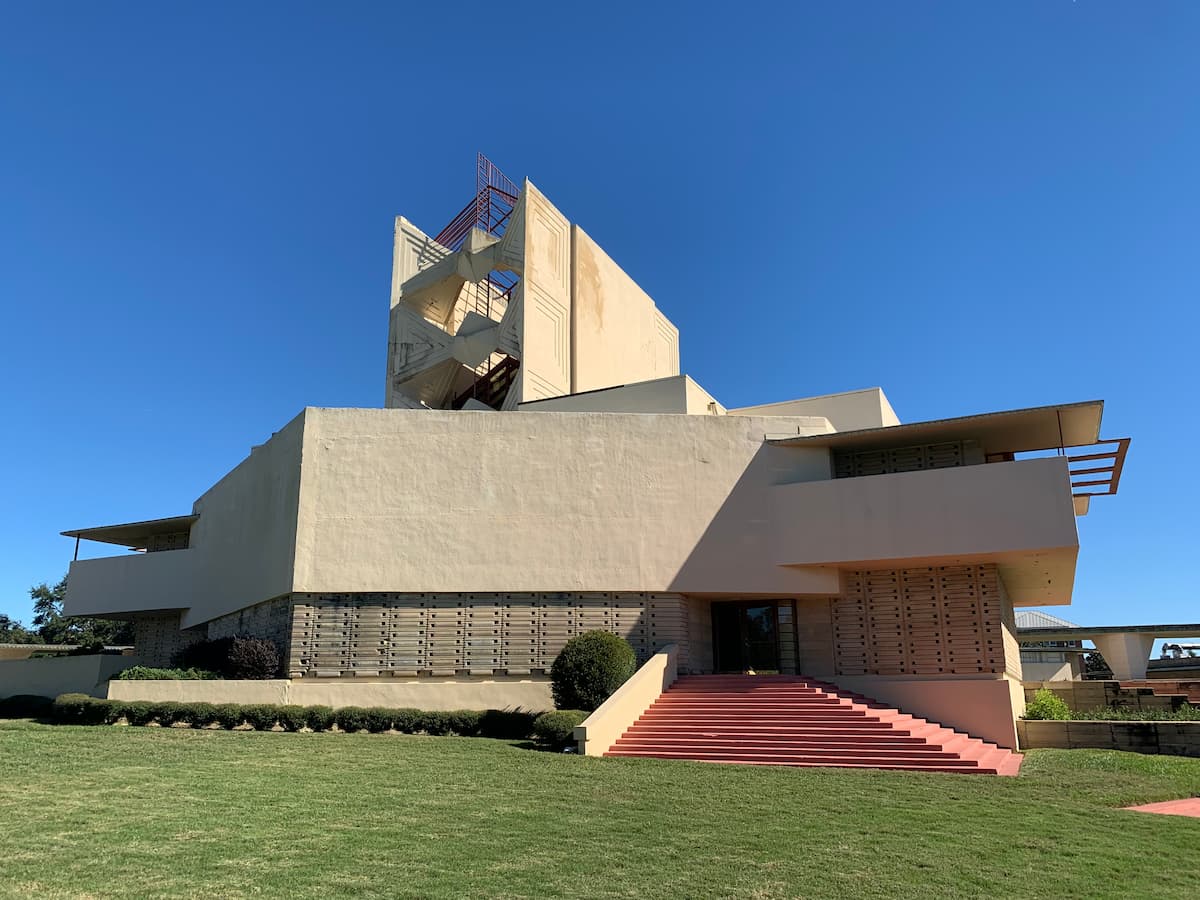The Linn Cove Viaduct on the Blue Ridge Parkway in North Carolina is one of the most scenic bridges anywhere in the Southeast!

Familiar with springtime cruisers, summertime road trippers, and fall leaf peepers, the Linn Cove Viaduct helps millions of motorists see some of the prettiest mountainside views in the United States.
Most folks just drive over the Linn Cove Viaduct. But some — like my wife and I — have also taken hikes under and around this famous bridge.
Shutterbugs love capturing this North Carolina landmark in their photographs — and I have plenty of Linn Cove Viaduct photos to share with you that were taken during the peak fall colors!
In this article, you will learn:
- Brief history of the Linn Cove Viaduct
- Ways to enjoy this free thing to do in North Carolina
- What it’s like visiting this North Carolina landmark in the fall
- My tips for walking under and around the Linn Cove Viaduct
Building The Linn Cove Viaduct
Linn Cove Viaduct crosses Linn Cove, which is part of the majestic Grandfather Mountain — a major North Carolina sightseeing point along the 469-mile Blue Ridge Parkway.
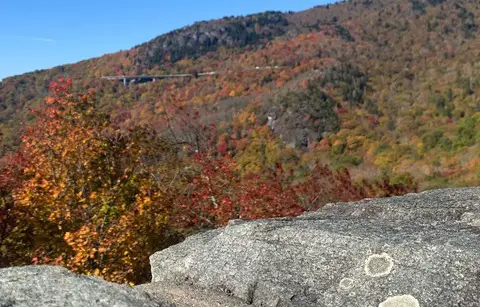
But the Linn Cove bridge hasn’t been around forever. In fact, the scenic Linn Cove Viaduct wasn’t even around until the 1980s!
This segment of the Blue Ridge Parkway, which was first constructed in 1935, was among the last sections of this North Carolina fall foliage destination path to be built.
There were many complications involved with building the Linn Cove bridge — including the rugged terrain of Grandfather Mountain, which at nearly 6,000 feet tall and some 300 million years old is among the tallest and oldest segments of the Appalachian Mountain range.

Conservationists were in favor of constructing the Linn Cove Viaduct — because they thought it would help preserve the area as a recreational destination and help prevent logging and other industrial uses on lands in the vicinity.
Acquiring land for the Linn Cove bridge project was one of the biggest hurdles for the United States government, but so, too, was devising an innovative type of roadway that could safely convey motorists around the steep mountain face. Cutting away rock and terracing the surface for a roadbed, which had been done for many other stretches of the Blue Ridge Parkway, proved infeasible and also posed environmental risk to the particularly sensitive Grandfather Mountain.
Engineers and planners began scouting the land around the future Linn Cove bridge in earnest during the mid-1970s to ascertain geological information and start planning how a passageway could be built around the steep mountain face. Construction on the Linn Cove stretch of the Blue Ridge Parkway began in 1979 under the steady tutelage of Figg & Muller Engineering Group and Jasper Construction Company.
A Monumental Feat

The unique challenges of building this section of the Blue Ridge Parkway called for novel solutions…
Early on, construction equipment was brought in by helicopter. Construction on the bridge was done in segments with a custom-designed crane that could creep along the newly constructed bridge from south to north — keeping nearly all construction equipment off the ground, except for that used for drilling pier footings.
The bridge itself also is unlike anything that had built in the United States at that time. Most bridges are straight — but not the Linn Cove Viaduct! Its location on the curving mountain face required the bridge to take a serpentine S-and-a-half path.
When all was said and done (and built), the Linn Cove Viaduct consisted of 153 segments, each weighing 50 tons. The longest span between piers is 180 feet, with the total length of the $10 million bridge coming in at 1,243 feet — nearly a quarter of a mile long.
The Linn Cove Viaduct was completed in 1983 and was formally inaugurated on September 11, 1987 — the year the last segments of the Blue Ridge Parkway were completed.
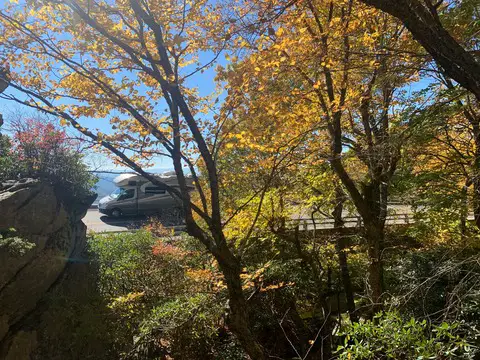
The Linn Cove roadway has received many accolades, including the 1984 President’s Design Award, which said:
The designers of the Linn Cove Viaduct were confronted with the difficult problem of creating a road over a rugged terrain of exceptional beauty without interfering with the environment. Their solution is technically innovative and respectful of the environmental situation. From an engineering point of view, construction of the roadway by pre-cast, segmental concrete elements set from above on segmental piers is elegant, economical, and new. These techniques can be used in the service of the environment; they provide accessibility by animal life both below and around the structure and do not damage the forest land, trees, or streams. The roadway results in an elegant curving ribbon that caresses the terrain without using it as a support. It gives the motorist the sensation of driving tantalizing on air while the earth goes by.”
Seeing The Linn Cove Bridge Up Close
Driving the Linn Cove Viaduct is one of my favorite road trip experiences.
While its perch thousands of feet above sea level may make some drivers nervous, I would certainly not place the Linn Cove Viaduct among the scariest bridges.
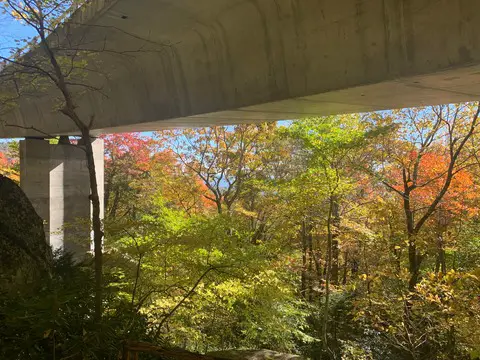
In fact, driving the Linn Cove bridge is one of the most enjoyable and majestic trips I’ve ever made — an experience made even more magical when fall colors are at their peak along the Blue Ridge Parkway!
The National Park Service operates the Linn Cove Viaduct Visitor Center on the south side of the bridge, where the Tanawha Trail is located.
My wife and I have walked this trail under and around the Linn Cove Viaduct. While it may prove to be a moderately challenging path for some (especially as you get farther along the trail where it really climbs up around the rugged rocks), it is SO worth it. The views are simply extraordinary!
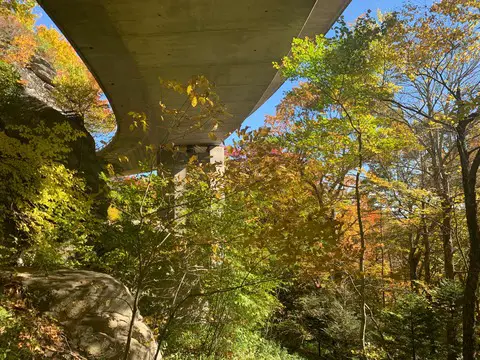
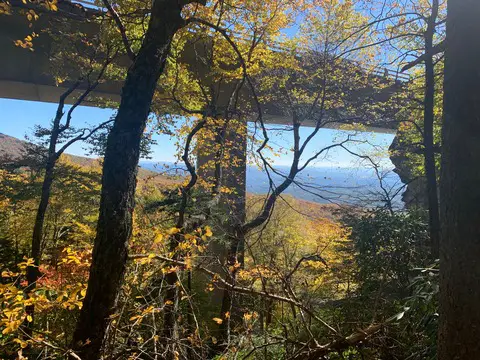
Best of all… the Linn Cove Viaduct and Tanawha Trail are free to enjoy!
My Tips For Visiting The Linn Cove Viaduct

The Linn Cove bridge isn’t just something you drive over, it’s something you plan for — especially if you want to make the most of your Blue Ridge Parkway trip!
Here are my best tips for driving the Linn Cove Viaduct:
- Know exactly where the Linn Cove Viaduct is. It’s located at milepost 304.4 on the Blue Ridge Parkway in North Carolina.
- Plan your visit for the best time of year. Prime driving time is from late spring through late fall. Peak autumn leaf color along the Blue Ridge Parkway occurs between late September and late October — depending on elevation.
- Make sure Linn Cove Viaduct is open! It’s sometimes closed during inclement weather. Also, be prepared for road closures — they most frequently happen after heavy rains, snowfall, and rockfalls.
- Make sure the Linn Cove Viaduct Visitor Center is open, as well. It was closed for repairs the last time my wife and I visited. The Visitor Center’s normal operating season is May through October.
- Driving to the Linn Cove bridge for fall color?… Get on the viaduct early! Traffic jams and slow driving conditions are common on the Blue Ridge Parkway in October — from late morning through the early afternoon. In my opinion, the early bird catches the best fall color driving experience!



